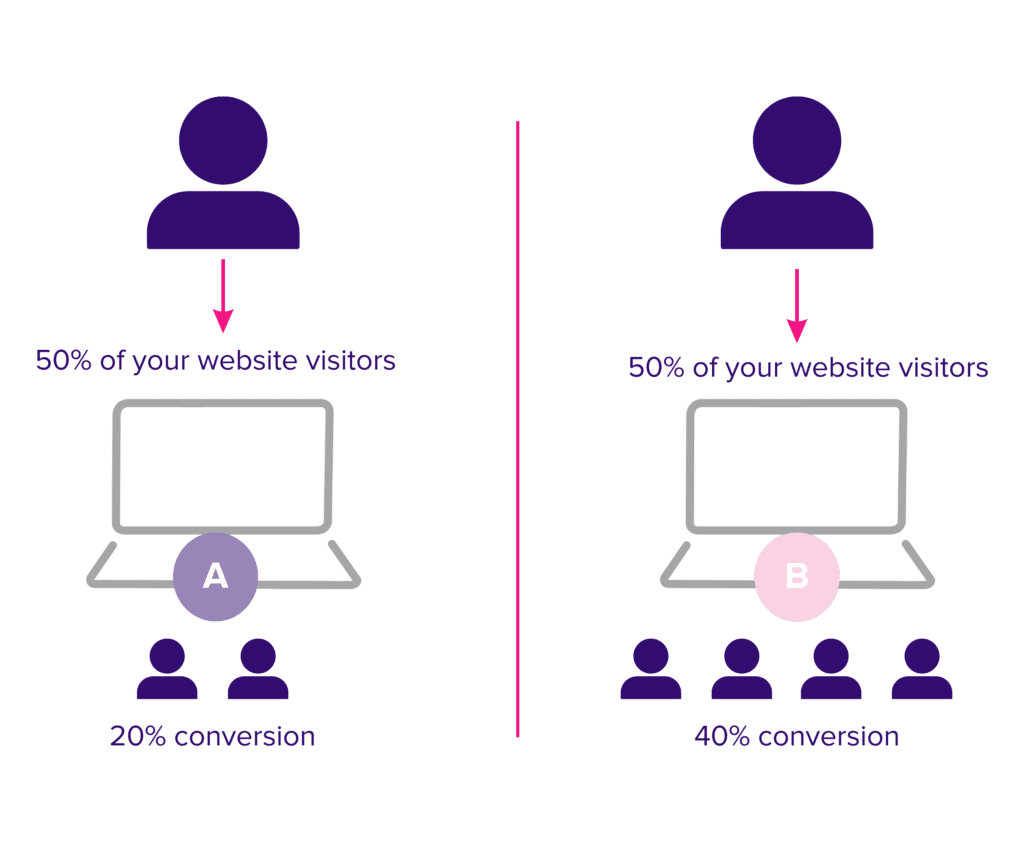Over recent years, both B2C and B2B websites have gone through a huge shift in how they need to serve their visitors. Going right back to where things started in the 1990s, websites weren’t pretty and weren’t there to sell you something. Then we enter the 2000s when SEO takes over, and the fight to be the top spot on Google was the number one priority. Enter the 2010s – search engines became smarter, and websites were starting to be built for the B2B space, still without taking user experience into consideration.
Now we are here, the 2020s. Where users’ expectations have risen and their demands along with it. But how can you ensure you are reaching those demands and cutting through the digital noise? I am going to run through exactly how conversion rate optimization (CRO) is the answer you’re looking for.


Website progression timeline
What is CRO?
CRO is the process of increasing the percentage of website visitors that take a desired action such as buying a product, downloading content, or subscribing to a newsletter. In a nutshell, CRO is used to improve the performance of not only your website but your entire marketing strategy. And an optimized marketing strategy, means an increase in conversion, MQL’s and revenue.
Who is in control?
When websites began marketers were rarely in control of the website, it was down to everyone from the board, IT, and product managers to decide on changes and the marketing team to make sense of the demands. This is putting your website in the hands of chance and opinions rather than data-driven facts.
In today’s world, it shouldn’t be employees opinions that control the website, it should be data. Has the CMO mentioned a new tagline that they want on the website? Does the product manager want to change the layout of the homepage to include more product information? Everyone has personal opinions as to what they think will look good on a website but to increase conversions you need data and proof.
AB testing
There are 4 main steps to CRO – Gathering data and a hypothesis, running tests, analyzing, and repeating. The most important step – test, test and test some more!
As a marketer, you need to give evidence to all your stakeholders about why you decided to act on some changes and why you decided against them. AB testing is designed with marketers in mind. Rather than decisions being made by who gives their opinion first or the loudest, your decisions can be made by how your users are acting.
For example, that new strapline the CMO asked for on the website? Let’s keep the old strapline as test A and the new strapline as test B. Then you can measure which variable has the most conversions and then go to your stakeholders with proof as to why you made that decision. AB testing is rapid, allowing you to see what your customers actually want to see and delivering growth faster.


AB testing explained
You can create a winning website as long as each change, idea, and piece of copy is built around your users and what they want. CRO gives you better control over how your users interact with your website and gets you the results you desire.




